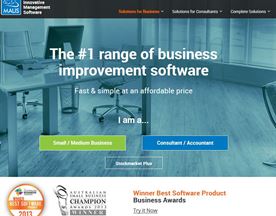What is a direct competition? Direct competition occurs between businesses offering similar products or services to the same market, aiming to capture the same customer base.
Direct competition is a term that refers to businesses that offer similar products or services and target the same customer base. In today’s highly competitive market, understanding direct competition is crucial for businesses to remain relevant and competitive. By analyzing the market landscape and identifying direct competitors, businesses can develop strategic marketing approaches that differentiate their products and services from those of their competitors.

Analyzing the market landscape involves identifying potential direct competitors and understanding their strengths and weaknesses. This information can help businesses develop effective marketing strategies that differentiate their products and services from those of their competitors. Product and service differentiation is one way of achieving this, where businesses focus on developing unique features that set their products and services apart from those of their competitors. Customer and market insights are also essential for businesses to develop effective marketing strategies that resonate with their target audience.
Operational strategies for competitiveness are also crucial for businesses to remain competitive in the market. This involves optimizing business operations to reduce costs and improve efficiency, which can result in lower prices for customers and higher profits for businesses. By understanding direct competition and developing effective marketing and operational strategies, businesses can remain competitive and thrive in today’s market.
Key Takeaways
- Understanding direct competition is crucial for businesses to remain relevant and competitive in today’s market.
- Analyzing the market landscape and identifying direct competitors can help businesses develop effective marketing strategies that differentiate their products and services.
- Operational strategies for competitiveness, such as optimizing business operations, can help businesses reduce costs and improve efficiency.
Understanding Direct Competition
Direct competition refers to businesses that offer similar products or services and target the same customer base. In this section, we will define direct competitors, provide examples, and discuss how to identify them.
Defining Direct Competitors
Direct competitors are businesses that offer products or services that are similar to yours and target the same customer base. They are often in the same industry and may have similar marketing strategies. For example, Burger King and McDonald’s are direct competitors in the fast-food industry, offering similar products and targeting similar customers.
Examples of Direct Competition
Direct competition can be found in various industries, including the sportswear industry. Nike and Adidas are direct competitors, offering similar products and targeting similar customers. In the aviation industry, Boeing and Airbus are direct competitors, offering similar products and targeting similar customers.
Identifying Direct Competitors
Identifying direct competitors is essential for market research and analysis. One way to identify direct competitors is through similarweb, a keyword research tool that analyzes website traffic and provides information on competitors. Another way is to conduct market research and analyze the industry to determine who the major players are.
To learn more about direct competition and how to identify competitors, check out this link to an article by Entrepreneur.
Analyzing the Market Landscape

When it comes to analyzing the market landscape, there are several key factors to consider. In this section, we will explore market share and position, industry reports and market trends, and competitive analysis techniques.
Market Share and Position
Understanding your company’s market share and position is critical for success. This information can help you identify areas where you may be losing ground to competitors, as well as opportunities to gain market share. One valuable resource for this type of analysis is IBISWorld, a provider of industry research reports that includes market share data for a wide range of industries.
Industry Reports and Market Trends
Industry reports and market trends are another important tool for analyzing the market landscape. By staying up-to-date on the latest trends and developments in your industry, you can identify opportunities and potential threats. One useful resource for this type of analysis is Statista, a provider of market and consumer data that offers a wide range of reports and statistics.
Competitive Analysis Techniques
Competitive analysis is a key component of any market analysis. By understanding your competitors’ strengths and weaknesses, you can identify areas where you may be able to gain an advantage. One effective technique for this type of analysis is SWOT analysis, which involves identifying your company’s strengths, weaknesses, opportunities, and threats in relation to your competitors. Another useful technique is Porter’s Five Forces analysis, which examines the competitive forces within an industry to identify potential threats and opportunities.
Overall, analyzing the market landscape is a critical component of any successful business strategy. By staying up-to-date on market trends, understanding your company’s market position, and conducting competitive analysis, you can identify opportunities and potential threats and make informed decisions to drive growth and success.
Strategic Marketing Approaches

Direct competition can be a tough challenge for any business. To stay ahead of the competition, it is essential to have a well-planned and executed marketing strategy. In this section, we will discuss some strategic marketing approaches that can help businesses compete effectively.
Marketing Strategies for Competing
When it comes to competing with other businesses, it is important to have a clear understanding of your target audience and their needs. This can help you create targeted marketing campaigns that resonate with your audience. It is also important to differentiate your brand from your competitors. This can be achieved through unique branding, messaging, and content.
SEO and Online Presence
In today’s digital age, having a strong online presence is crucial for any business. Search Engine Optimization (SEO) can help businesses improve their visibility on search engines such as Google. This can be achieved through various strategies such as optimizing website content, building backlinks, and improving website speed. It is also important to have a user-friendly website that is easy to navigate and provides value to visitors.
Social Media and Audience Engagement
Social media can be a powerful tool for businesses to engage with their target audience. It is important to have a clear social media strategy that aligns with your overall marketing goals. This can include creating engaging content, using relevant hashtags, and leveraging influencer marketing. It is also important to engage with your audience by responding to comments and messages in a timely manner.
Overall, businesses that have a well-planned and executed marketing strategy can effectively compete with their direct competitors. By understanding their target audience, improving their online presence, and engaging with their audience on social media, businesses can differentiate themselves and stay ahead of the competition.
Here is a link to an external resource that provides more information on the benefits of social media marketing.
Product and Service Differentiation

When it comes to direct competition, product and service differentiation plays a crucial role in determining which businesses will succeed and which will fail. Successful companies differentiate their products and services in a way that sets them apart from their competitors. This section will explore the different ways in which businesses can differentiate their products and services, including quality, pricing, value propositions, innovation, competitive edge, customer experience, and service.
Quality, Pricing, and Value Propositions
One of the most common ways businesses differentiate their products and services is through quality, pricing, and value propositions. Companies that offer higher quality products and services than their competitors can charge a premium price. On the other hand, companies that offer lower quality products and services than their competitors must compete on price. Value propositions can also be used to differentiate products and services. A value proposition is a statement that explains why a customer should choose a particular product or service over its competitors.
Innovation and Competitive Edge
Innovation is another way businesses can differentiate their products and services. Companies that are innovative and offer unique products or services have a competitive edge over their competitors. For example, Apple’s iPhone was a game-changer when it was first introduced, and it gave Apple a significant competitive edge in the smartphone market. Companies can also differentiate themselves by offering superior customer service or by providing a better overall customer experience.
Customer Experience and Service
Customer experience and service are essential factors in product and service differentiation. Providing a positive customer experience can differentiate a business from its competitors. This includes everything from the ease of purchasing a product or service to the level of customer support offered after the sale. Companies that provide exceptional customer service can build a loyal customer base, which can be a significant advantage in a competitive market.
In conclusion, product and service differentiation is crucial for businesses that want to succeed in a competitive market. By focusing on quality, pricing, value propositions, innovation, competitive edge, customer experience, and service, businesses can differentiate themselves from their competitors and build a loyal customer base. For more information on product and service differentiation, check out this article from Forbes.
Customer and Market Insights

Target Market Analysis
Understanding the target market is crucial for any business to succeed. Market research helps to identify the specific audience that the product or service is aimed towards. This includes demographics such as age, gender, income, and location. By analyzing the target market, businesses can tailor their marketing strategies to appeal to their target audience and increase sales.
Consumer Preferences and Behavior
Consumer preferences and behavior are constantly changing, and it is important for businesses to keep up with these changes. By conducting customer feedback surveys and analyzing consumer behavior, businesses can gain valuable insights into what their customers want and how they make purchasing decisions. This information can be used to improve products, services, and marketing strategies to better meet the needs of customers.
Customer Loyalty and Base
Customer loyalty is crucial for any business to thrive. A loyal customer base not only brings in repeat business but also acts as brand ambassadors, spreading positive word-of-mouth about the business. Building customer loyalty requires a deep understanding of the customer base and their needs. By offering exceptional customer service, personalized experiences, and rewards programs, businesses can create a loyal customer base that will continue to support them.
To gain more insights on customer and market trends, businesses can refer to reputable sources such as Forbes or Marketing Week. These sources provide valuable information on changing customer preferences, market research, and brand recognition. By staying up-to-date on industry trends and customer insights, businesses can stay ahead of the competition and continue to grow.
Operational Strategies for Competitiveness

To stay competitive in a direct market, businesses must develop and implement effective operational strategies. This section will explore some of the most successful strategies that companies can use to gain an edge over their competitors.
Supply Chain and Partnerships
One key strategy for achieving competitiveness is to optimize the supply chain. By partnering with suppliers and distributors, businesses can streamline their operations and reduce costs. This can be achieved through the use of technology, such as automated inventory management systems or real-time tracking of shipments.
Another way to improve the supply chain is to establish partnerships with other businesses. This can include joint ventures, strategic alliances, or even mergers and acquisitions. By collaborating with other companies, businesses can leverage their strengths and resources to achieve greater success.
Growth and Expansion Tactics
To remain competitive, businesses must also focus on growth and expansion. This can be achieved through a variety of tactics, such as expanding into new markets, launching new products or services, or investing in research and development.
One effective growth strategy is to focus on upselling and cross-selling. By encouraging existing customers to purchase additional products or services, businesses can increase their revenue and profitability.
Business Model and Profitability
Finally, businesses must focus on their overall business model and profitability. This includes developing a clear and effective business strategy, analyzing financial data to identify areas for improvement, and implementing cost-cutting measures where necessary.
One effective way to improve profitability is to focus on customer retention. By delivering exceptional customer service and creating a positive customer experience, businesses can increase customer loyalty and reduce churn.
Overall, by implementing these operational strategies, businesses can achieve greater success and competitiveness in a direct market. For more information on these strategies, check out this article from Forbes.
Frequently Asked Questions

How do direct competitors impact a company’s market strategy?
Direct competitors play a crucial role in shaping a company’s market strategy. A direct competitor is a company that offers the same products or services as another company, targeting the same customer base. Therefore, a company’s market strategy must take into account the actions of its direct competitors to remain competitive. Companies must analyze their direct competitors’ strengths, weaknesses, and marketing tactics to develop effective market strategies.
What distinguishes direct competition from indirect competition in a business context?
Direct competition is a situation where two or more companies offer similar products or services to the same customer base. Indirect competition, on the other hand, is a situation where two or more companies offer different products or services that can be used as substitutes by the same customer base. Direct competition is more intense than indirect competition, and companies must adopt different strategies to compete effectively in each situation.
Can you identify the characteristics of a direct competitor?
A direct competitor is a company that offers the same products or services as another company, targeting the same customer base. Direct competitors have similar business models, pricing strategies, and marketing tactics. They also compete for the same distribution channels and advertising space. Companies must identify their direct competitors to develop effective market strategies.
What role does direct competition play in shaping consumer choices?
Direct competition plays a significant role in shaping consumer choices. When two or more companies offer similar products or services, consumers compare prices, quality, and other factors to make informed decisions. Direct competition forces companies to improve their products or services continually, reduce prices, and offer better customer service to remain competitive.
How can businesses effectively analyze their direct competition?
Businesses can effectively analyze their direct competition by conducting a SWOT analysis. A SWOT analysis helps companies identify their direct competitors’ strengths, weaknesses, opportunities, and threats. Companies can also monitor their direct competitors’ marketing tactics, pricing strategies, and customer service to develop effective market strategies.
What strategies can companies employ to gain an advantage over direct competitors?
Companies can employ various strategies to gain an advantage over their direct competitors. For instance, they can differentiate their products or services by improving quality, design, or features. Companies can also reduce prices, offer better customer service, or adopt innovative marketing tactics. Additionally, companies can collaborate with their direct competitors to create synergies that benefit both parties.
One external resource that has high authority on this topic is the Harvard Business Review. They have published various articles on direct competition and market strategy that can provide valuable insights for businesses.
Compare hundreds of Business Intelligence Software in our Software Marketplace















